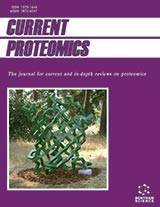Abstract
Human platelets are thought to express approximately 2000-3000 proteins, but post-translational modifications, alternatively spliced variants and a rich diversity of vertebrate domain architectures likely make this a conservative estimate. Even though rapidly advancing proteomic techniques have catalyzed the identification of roughly one third of the platelet proteome, a combination of abundance-based and activity-based proteomics is needed for elucidation of platelet functional characteristics including the definition of a “core proteome” and recognition of diverse enzyme activity profiles associated with various physiological states. In this review, we describe the latest mass spectrometry-based techniques capable of providing some of these physiological details required for more comprehensive evaluation of the human platelet repertoire.
Keywords: ABPP, biomarker, cancer, library, mass spectrometry, platelet, proteome, rat, hemostasis, interaction, interactome, protein, thrombosis, megakaryocyte, low-abundant proteins, cytoskeleton, vasodilator-stimulated, phosphorylations, kinase substrates, Glanzmann thrombasthenia
Current Proteomics
Title: Abundance- and Activity-Based Proteomics in Platelet Biology
Volume: 8 Issue: 3
Author(s): Stephen P. Holly, Xian Chen and Leslie V. Parise
Affiliation:
Keywords: ABPP, biomarker, cancer, library, mass spectrometry, platelet, proteome, rat, hemostasis, interaction, interactome, protein, thrombosis, megakaryocyte, low-abundant proteins, cytoskeleton, vasodilator-stimulated, phosphorylations, kinase substrates, Glanzmann thrombasthenia
Abstract: Human platelets are thought to express approximately 2000-3000 proteins, but post-translational modifications, alternatively spliced variants and a rich diversity of vertebrate domain architectures likely make this a conservative estimate. Even though rapidly advancing proteomic techniques have catalyzed the identification of roughly one third of the platelet proteome, a combination of abundance-based and activity-based proteomics is needed for elucidation of platelet functional characteristics including the definition of a “core proteome” and recognition of diverse enzyme activity profiles associated with various physiological states. In this review, we describe the latest mass spectrometry-based techniques capable of providing some of these physiological details required for more comprehensive evaluation of the human platelet repertoire.
Export Options
About this article
Cite this article as:
P. Holly Stephen, Chen Xian and V. Parise Leslie, Abundance- and Activity-Based Proteomics in Platelet Biology, Current Proteomics 2011; 8 (3) . https://dx.doi.org/10.2174/157016411797247512
| DOI https://dx.doi.org/10.2174/157016411797247512 |
Print ISSN 1570-1646 |
| Publisher Name Bentham Science Publisher |
Online ISSN 1875-6247 |
 3
3
- Author Guidelines
- Bentham Author Support Services (BASS)
- Graphical Abstracts
- Fabricating and Stating False Information
- Research Misconduct
- Post Publication Discussions and Corrections
- Publishing Ethics and Rectitude
- Increase Visibility of Your Article
- Archiving Policies
- Peer Review Workflow
- Order Your Article Before Print
- Promote Your Article
- Manuscript Transfer Facility
- Editorial Policies
- Allegations from Whistleblowers























